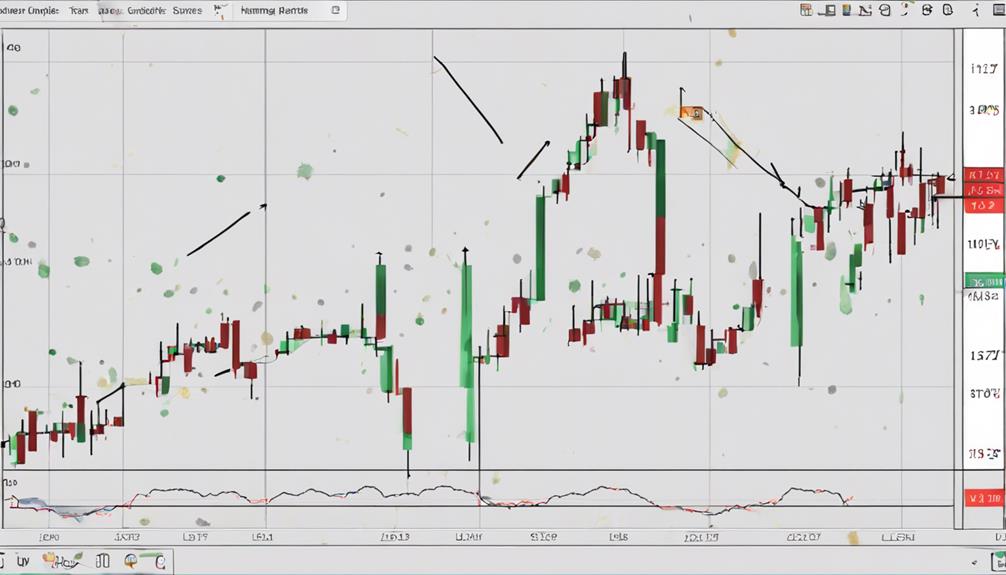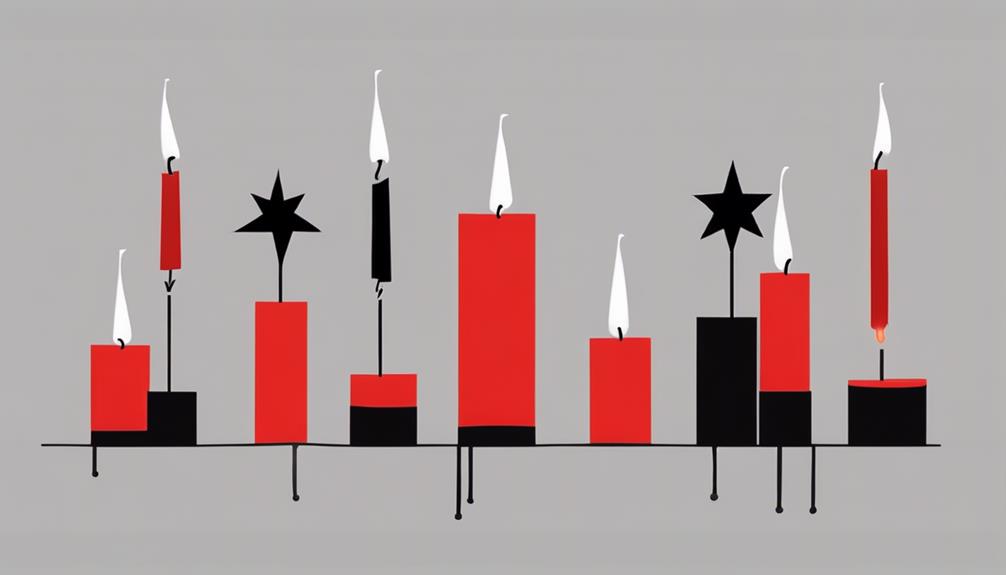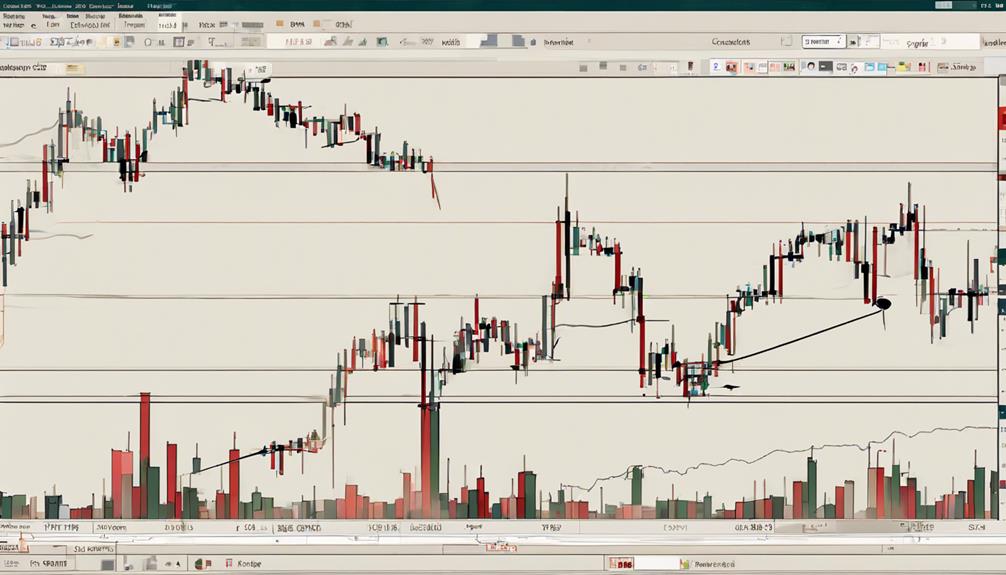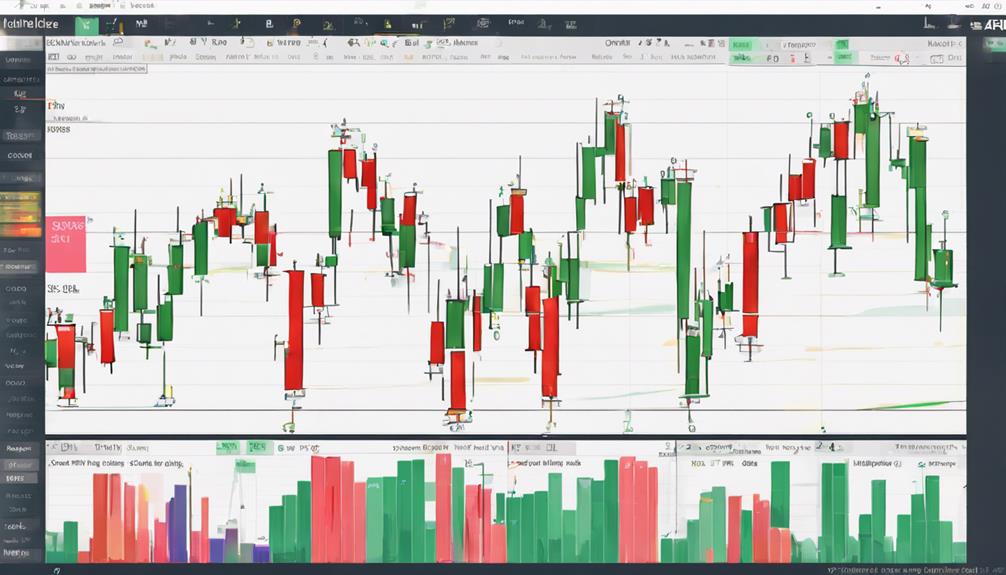Do you find yourself lost in a sea of candlestick patterns, unsure of which ones to trust with your trades? Understanding the nuances and implications of these patterns can be a game-changer in your trading strategy.
By mastering the art of interpreting candlestick formations, you can potentially unlock a whole new level of precision in your decision-making process.
So, how can candlestick pattern analysis truly guide you towards more profitable trades?
Understanding Candlestick Patterns Analysis
Understanding Candlestick Patterns Analysis is crucial for traders looking to interpret price movements effectively in the financial markets. Candlestick patterns, an essential tool in technical analysis, offer insights into market sentiment through visual representations on charts.
By studying these patterns, traders can identify potential trend reversals, continuations, and periods of indecision in the market. Each candlestick provides information on the open, close, high, and low prices within a specific timeframe, aiding traders in making informed decisions.
Mastery of candlestick analysis allows traders to gauge the balance between buyers and sellers, helping them anticipate market behavior and adjust their trading strategies accordingly. By delving into the nuances of candlestick patterns, traders can enhance their ability to navigate the complexities of the financial markets.
Applying Bullish Candlestick Patterns

To effectively capitalize on potential price reversals and buying opportunities in the financial markets, traders must adeptly apply bullish candlestick patterns. When recognizing patterns, keep in mind the following:
- Bullish candlestick patterns indicate potential reversals to the upside.
- Examples of bullish patterns include Hammer, Inverse Hammer, and Bullish Engulfing.
- These patterns suggest buying opportunities and market strength.
- They can help identify entry points for long positions.
Understanding and utilizing bullish candlestick patterns is crucial for enhancing trading strategies and capturing upward price movements. By incorporating these patterns into your analysis, you can make informed decisions and potentially improve your trading outcomes.
Utilizing Bearish Candlestick Patterns

Bearish candlestick patterns serve as crucial indicators for traders, signaling potential market downturns or resistance following an uptrend. Examples such as the Hanging Man, Shooting Star, and Bearish Engulfing patterns help traders identify possible entry points for short positions. These technical patterns are essential for anticipating price reversals and adjusting trading strategies accordingly.
By recognizing these bearish signals, traders can implement effective risk management strategies and capitalize on market movements. Utilizing bearish candlestick patterns is a key aspect of technical analysis, providing valuable insights into market sentiment and potential shifts in price direction.
Incorporating these patterns into your trading approach can enhance decision-making processes and improve overall trading performance in various market conditions.
Implementing Continuation Candlestick Patterns

When recognizing Continuation Candlestick Patterns in trading analysis, you can anticipate a temporary pause in the current market trend rather than a reversal. These patterns, such as the Doji, Spinning Top, and Falling Three Methods, help identify market rest or indecision during existing trends. By recognizing these signals, traders can anticipate the continuation of the current price movement.
Here are four key points to consider:
- Continuation candlestick patterns indicate a pause in the current trend.
- Doji, Spinning Top, and Falling Three Methods are examples of such patterns.
- Traders use these patterns to identify market rest or indecision.
- The patterns suggest that the market is likely to continue its existing trend after a temporary pause.
Enhancing Trade Decisions With Candlestick Patterns

By incorporating candlestick patterns into your trade analysis, you can significantly improve your decision-making process and overall trading performance. Candlestick patterns offer insights into market sentiment and potential price movements, aiding in identifying optimal entry and exit points.
Understanding bullish and bearish patterns can help predict trend reversals or continuations, allowing for more informed trade decisions. By combining candlestick pattern analysis with other technical tools, traders can enhance trade accuracy and timing.
These patterns, such as Doji, Hammer, and Engulfing, provide valuable visual cues that can guide you in navigating the complexities of the market. Mastering the interpretation of candlestick patterns is crucial for achieving success in trading.
How Can Candlestick Pattern Analysis Help Guide Trades in Equity Trading?
Candlestick pattern analysis plays a crucial role in achieving effective equity trading with candlestick patterns. By recognizing specific patterns, traders can gain insight into market sentiment, potential price movements, and potential reversal points. This information can help guide trading decisions and improve overall profitability in equity trading.
Frequently Asked Questions
Do Professional Traders Use Candlestick Patterns?
Professional traders use candlestick patterns extensively. These patterns offer valuable insights into market sentiment, trend shifts, and potential price moves. By incorporating them into their analysis, traders gain a competitive edge in making informed trading decisions.
How Do You Trade With Candlestick Patterns?
You trade with candlestick patterns by recognizing specific formations on charts, confirming signals with volume and trends, planning entry and exit points accordingly. Implement stop-loss orders to manage risks, monitor changes, and adjust strategies as needed for successful trading.
What Is the 3 Candle Rule?
When analyzing candlestick patterns, the 3 Candle Rule involves studying three consecutive candles to predict market movement. Look for specific patterns to identify trends, reversals, or shifts. Apply this rule across various timeframes for trading insights.
What Is the Best Candlestick Pattern to Trade?
When trading, consider the market conditions and your strategy to determine the best candlestick pattern. Look for reliable signals like the Hammer, Doji, or Engulfing patterns. Criteria such as strong reversals or clear trends are crucial.
Conclusion
You've learned to navigate the complexities of the market with candlestick pattern analysis. Like a skilled sailor reading the wind and waves, you can now interpret the ebb and flow of prices with precision.
By utilizing bullish, bearish, and continuation patterns, you have the tools to make informed trade decisions. Stay vigilant, keep honing your skills, and let candlestick patterns be your guiding light in the turbulent seas of trading.
